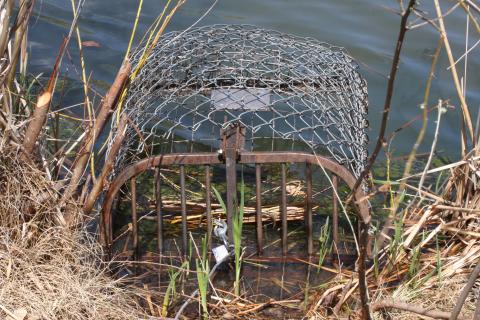A person shall not use, set, place, maintain, manufacture or possess any trap for the purpose of capturing furbearing mammals, except for common type mouse and rat traps, nets, and box or cage type traps, as otherwise permitted by law. A box or cage type trap is one that confines the whole animal without grasping any part of the animal, including Hancock or Bailey's type live trap for beavers. Other than nets and common type mouse or rat traps, traps designed to capture and hold a furbearing mammal by gripping the mammal's body, or body part are prohibited, including steel jaw leghold traps, padded leghold traps, and snares.
Special Permits to Use Restricted Traps or Other Means of Relief. A person or his duly authorized agent may apply for a permit to use restricted traps or other means of relief, as follows:
(a) to the municipal board of health, in situations involving a threat to human health and safety, in accordance with 321 CMR 2.08(6) through (14);
(b) to the director, in situations not involving a threat to human health and safety, in accordance with 321 CMR 2.08(16) through (18).
Criteria for Determining Threats to Human Health and Safety. A threat to human health and safety may include, but not be limited to, one or more of the following situations:
(a) beaver or muskrat occupancy of a public water supply;
(b) beaver or muskrat-caused flooding of drinking water wells, wellfields, or water pumping stations;
(c) beaver or muskrat-caused flooding of sewage beds, septic systems, or sewage pumping stations;
(d) beaver or muskrat-caused flooding of a public or private way, driveway, railway, or airport runway or taxiway;
(e) beaver or muskrat-caused flooding of electrical or gas generation plants or transmission or distribution structures or facilities, telephone or other communications facilities, or other public utilities;
(f) beaver or muskrat-caused flooding affecting the public use of hospitals, emergency clinics, nursing homes, homes for the elderly, or fire stations;
(g) beaver or muskrat-caused flooding affecting hazardous waste sites or facilities, incineration or resource recovery plants, or other structures or facilities whereby flooding may result in the release or escape of hazardous or noxious materials or substances;
(h) the gnawing, chewing, entering, or damage to electrical or gas generating or transmission equipment, cables, alarm systems, or facilities by any beaver or muskrat;
(i) beaver or muskrat-caused flooding or structural instability on property owned by the applicant if such animal problem poses an imminent threat of substantial property damage or income loss, which shall be limited to:
- flooding of residential, commercial, industrial or commercial buildings or facilities;
- flooding of or access to commercial agricultural lands which prevents normal agricultural practices from being conducted on such lands;
- reduction in the production of an agricultural crop caused by flooding or compromised structural stability of commercial agricultural lands;
- flooding of residential lands in which the municipal board of health, its chair or agent or the state or federal department of health has determined a threat to human health and safety exists.




